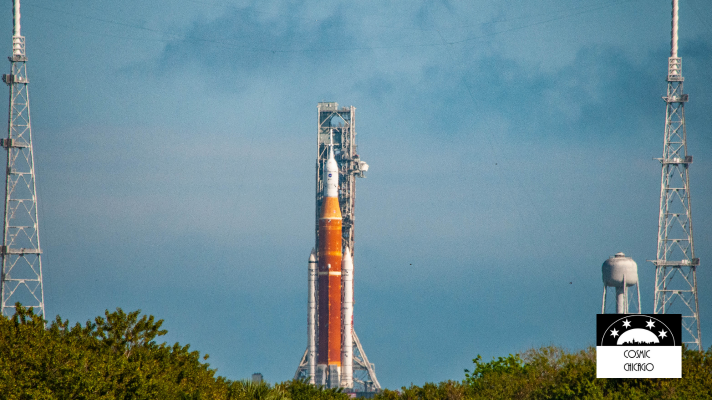On Wednesday, NASA announced new dates for the next launch attempt of Artemis I. After needing to roll SLS back to the Vehicle Assembly Building to avoid damage from Hurricane Ian, NASA says it can have SLS ready for launch by mid-November.
Liftoff of Artemis I is now scheduled for Monday, November 14th, at 12:04 a.m. ET. Backup launch dates are November 16th and 19th. The launch window on Wednesday, November 16th, would open at 1:04 a.m. ET and at 1:45 a.m. ET for the Saturday, November 19th launch opportunity.

The launch window for November 14th is only 69 minutes long and would result in a mission duration of about 25-and-a-half days which is shorter than the timelines for scrubbed August and September launch attempts. At the end of the mission, the Orion spacecraft will splashdown in the Pacific Ocean Friday, December 9th.
Two previous attempts to launch Artemis I resulted in issues that led NASA to stand down from each launch attempt, followed by the need to roll SLS back to avoid an oncoming hurricane. The first launch scrub during the August 29th attempt was due to engine issues that teams remedied by adjusting engine chilldown procedures and fixing a leak near the tail service mast umbilical. During the September 3rd launch attempt, a hydrogen leak presented itself, and teams had to perform work to replace a seal while waiting for approval from the Eastern Range.

On September 21st, a cryogenic demonstration test took place following repairs to fix the leak that ended the second launch attempt. At the conclusion of the test, with all objectives met, NASA managers set September 27th as the next potential launch date. However, as soon as it became apparent that Hurricane Ian was a credible threat and Kennedy Space Center was in the predicted path, SLS was rolled back to the VAB.
Ian tracked across Cape Canaveral Space Force Station at approximately 7 a.m. CT on September 29th. Teams at Kennedy Space Center began inspecting the facility immediately after Hurricane Ian moved through and determined minimal work was needed to prepare SLS for launch again.

Teams will perform standard maintenance on the thermal protection system and charge or replace batteries, including those on several secondary payloads and the flight termination system. NASA says rollout to the launch pad can happen as early as November 4th.
The Artemis I mission is an uncrewed flight of SLS, a test flight, that will launch the Orion spacecraft to the Moon and back to Earth. Testing the SLS flight system, ground systems, and the deep space systems on the Orion Spacecraft is the main objective for the first flight of the Artemis program. Orion will orbit the Moon several times before returning to Earth to test the spacecraft’s reentry systems.

NASA plans to return humans to the Moon, including the first woman and person of color, as part of the Artemis missions. This program includes building a rocket, SLS, to launch the Orion Spacecraft to the Moon and developing a human landing system and the spacesuits necessary to survive and work on the lunar surface.
Related: Space Launch System Explained: A Guide to NASA’s Moon Rocket

